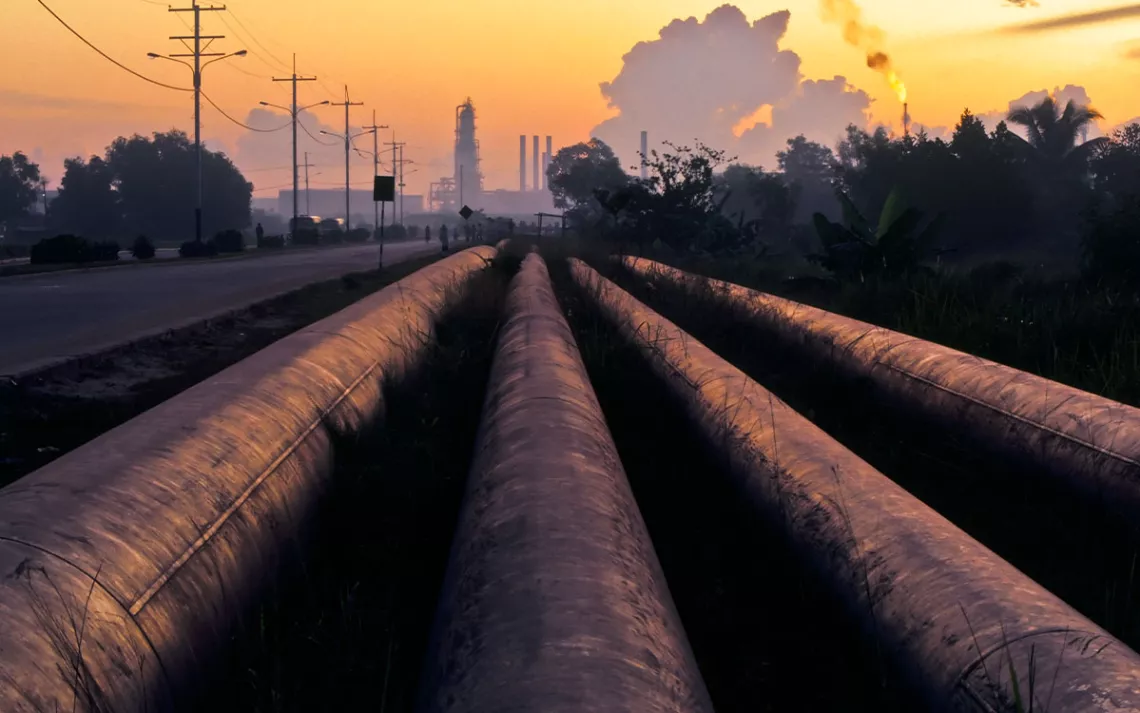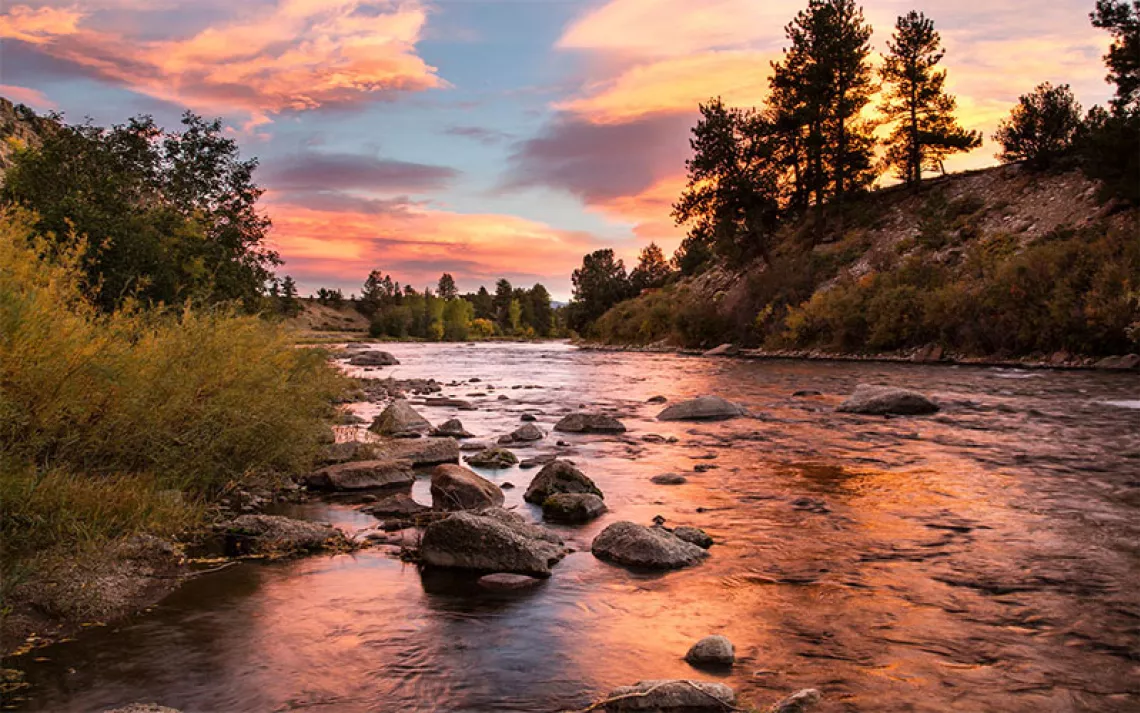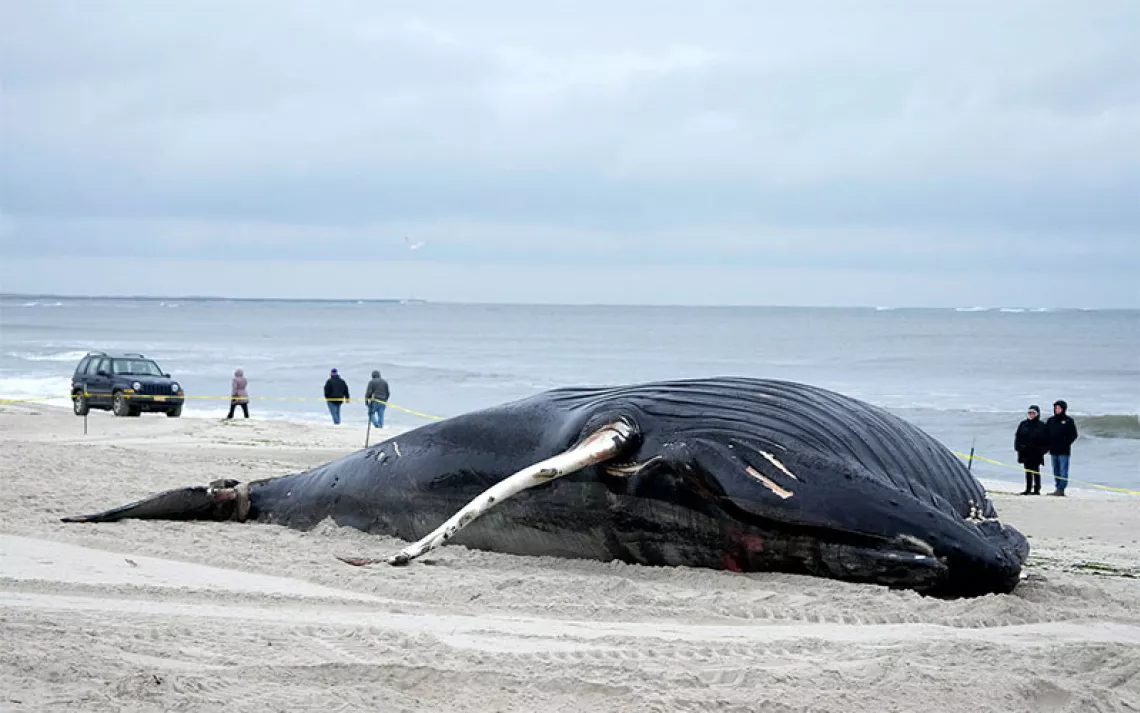You’re Probably Subsidizing Your Utility's Leaky Infrastructure
Methane often leaks from the gas that utility companies purchase, and customers are paying for it

Photo by MsLightBox/Getty Images
Utility companies are leaking fossil fuels and asking customers to pay for it. Here’s how it works: Utilities purchase gas from an oil and gas company and then sell a smaller amount to the public, its ratepayers. Inevitably, small amounts go missing because of leaks or something more benign, such as inaccurate meters, accounting discrepancies, or pressure differences. Regardless, it’s the customers who cover the difference.
This fee for Lost and Unaccounted For (LAUF) gas isn’t unique. All types of utilities—whether big or small, public or private, water, electric, or gas—often charge ratepayers a similar fee. It’s been the case since a 1935 Supreme Court decision, when justices determined that lost and unaccounted-for gas is simply the cost of doing business. However, "natural gas" consists mainly of methane, the most potent greenhouse gas, which warms the atmosphere at 80 times the rate of carbon dioxide. Even a small leak in a pipeline could mean enormous consequences for global warming.
At the same time, many electric and gas utilities have hiked bills to pay for rising energy costs. This is largely because of extreme weather, which has disrupted grids, and AI-fueled data centers, which have caused electricity demand to balloon. Now, some groups are protesting these rate hikes. The pressure to rein in methane leakage also comes as many groups push homeowners to switch from gas to electric appliances. It’s part of a strategy to both reduce harmful indoor air pollution (toxins from gas stoves increase asthma rates, for example) and greenhouse gas emissions.
However, this shift, ironically, might be hindering the process of curbing gas leaks, Catie Hausman, an associate professor of public policy at the University of Michigan, said. It’s “gotten more complicated because of the movement toward electrification and the idea that we might try to move people away from natural gas altogether,” Hausman said.
Reaching net-zero emissions will require an energy transition. Right now, the main strategy is to electrify and then transition the electric grid from dirtier fuels like coal, oil, and gas to cleaner fuels like solar, wind, and even hydrogen or nuclear. “It’s a real challenge right now: How we conduct this transition toward electrification in a way that maybe maintains the integrity of the pipeline network without raising prices too much in the interim. And I think it’s really going to be a challenge over the next decade.”
The easy way out
Hausman and Lucija Muehlenbachs, an economics professor at the University of Calgary, both environmental economists, published a paper in the Journal of the Association of Environmental and Resource Economists estimating how much gas utilities spend on repairing or replacing pipes to prevent leaks. They found that utilities didn't spend much on repairing pipes compared with the amount they spent purchasing the gas itself, but they spent a significant amount on replacing pipes. It’s good that they are spending to replace pipes, especially in hazardous situations where a leaky pipe could lead to an explosion or gas poisoning, but it’s economically and climatically inefficient to wait to replace it instead of spending less to repair it more quickly, according to the authors.
Hausman said it’s notoriously difficult to measure methane leaks. To get their estimate, they used data aggregated from the Department of Energy, Department of Transportation, public utility commissions, and some others to find out how much utilities across the country spend on purchasing gas from suppliers and how much of that gas they sell to ratepayers. They used the difference between the cost and sale to determine how much gas went missing or was lost and unaccounted for.
Then they tried to estimate how much of that was spent on repairing pipes versus replacing them altogether. It’s not a perfect science, but Hausman and Muehlenbachs determined that utilities were not repairing their pipes as much as "privately optimal," or in a way that maximizes profits, or at least balances the utility's checkbook. This is because companies don’t have to take the cost of lost gas, which may normally be a large enough amount of lost money to justify spending on repairs, into their revenue model, since ratepayers subsidize it. They also were not repairing their pipes as much as "socially optimal," a higher standard that takes into account the public health and climate costs of missing methane.
“Utilities that had a lot of old rusty pipes would have large lost and unaccounted for gas,” Muehlenbachs said. “Utilities might tell you that you can’t assume all of the LAUF is methane leakage. We would say it is correlated.”
Based on their analysis, Hausman said they found that utilities do not have a sufficient financial incentive to reduce small leaks. “We’re not claiming that utilities don’t repair leaks. They certainly do,” Hausman said. “The question is whether they are incentivized to repair all of the leaks they have. So not just the ones they repair for safety but also the ones that don’t pose a (public health) threat, that do pose a climate threat. And that do represent lost revenue.”
Piedmont Natural Gas, which is the ninth-largest gas utility in the country by number of customers, wrote in an email to Sierra that they take several steps to detect methane leaks, such as using satellites to find and fix leaks faster than traditional survey methods and sampling meters to ensure accuracy for billing.
“The fact that they can just pass the fee onto customers doesn’t incentivize them to actually fix the issue. And especially if it's leakage that’s so minimal that happens over time, it’s probably easier to minimize the impact of that overall. I think that’s stupid,” said Jenna Garden, a 26-year-old resident of Sunnyvale, California, who gets her gas and electricity from Pacific Gas & Electricity. She spent $253 on her September bill. “It’s wild that we continue to prop up basically a private monopoly to provide essential infrastructure. . . . I’ve lived in the same house for the past three years, and my bill has almost doubled over that time.”
Regulation is needed
Ratepayers probably don’t notice the LAUF fee. They also likely would not be able to find it on their bill. It varies based on the utility company, but Hausman and Muehlenbachs said it could be included under line items such as a distribution charge, gas cost recovery charge, gas cost factor, or something else.
“Before we started caring about methane emissions, this represented a fairly small part of people’s bills. So it just wasn’t an area where regulators felt they needed to focus a lot of monitoring effort,” Hausman said. “The problem is that the climate implications are so much larger than just the gas costs.”
Because of the far-reaching implications of these methane leaks, the only real way to address the issue is with regulations. Federal, state, and local policies to curb methane vary widely. They include strengthening oil and gas drilling regulations, phasing out gas household appliances, incentivizing research and development for methane detection and reduction technology, and more. The Inflation Reduction Act also allocates some money to gas utilities who want to fix their pipes.
Some states have tried to address missing gas at the distribution level. Washington State passed a law in 2020 requiring gas companies to post how much gas went missing from their pipes, the reason why, and how much it would cost ratepayers. Michigan similarly introduced a bill in 2016 and then again in 2022 that would ban gas companies from charging ratepayers for missing gas. However, the bill died in committee both times.
Utilities are also "natural monopolies," Muehlenbachs said, meaning it makes sense that water, gas, and electric utilities don’t compete for customers. “It is a general problem. How do you incentivize utilities that are not necessarily acting like a private company? But when you have these externalities [for lost gas], you want them to act in a socially optimal way.”
 The Magazine of The Sierra Club
The Magazine of The Sierra Club



